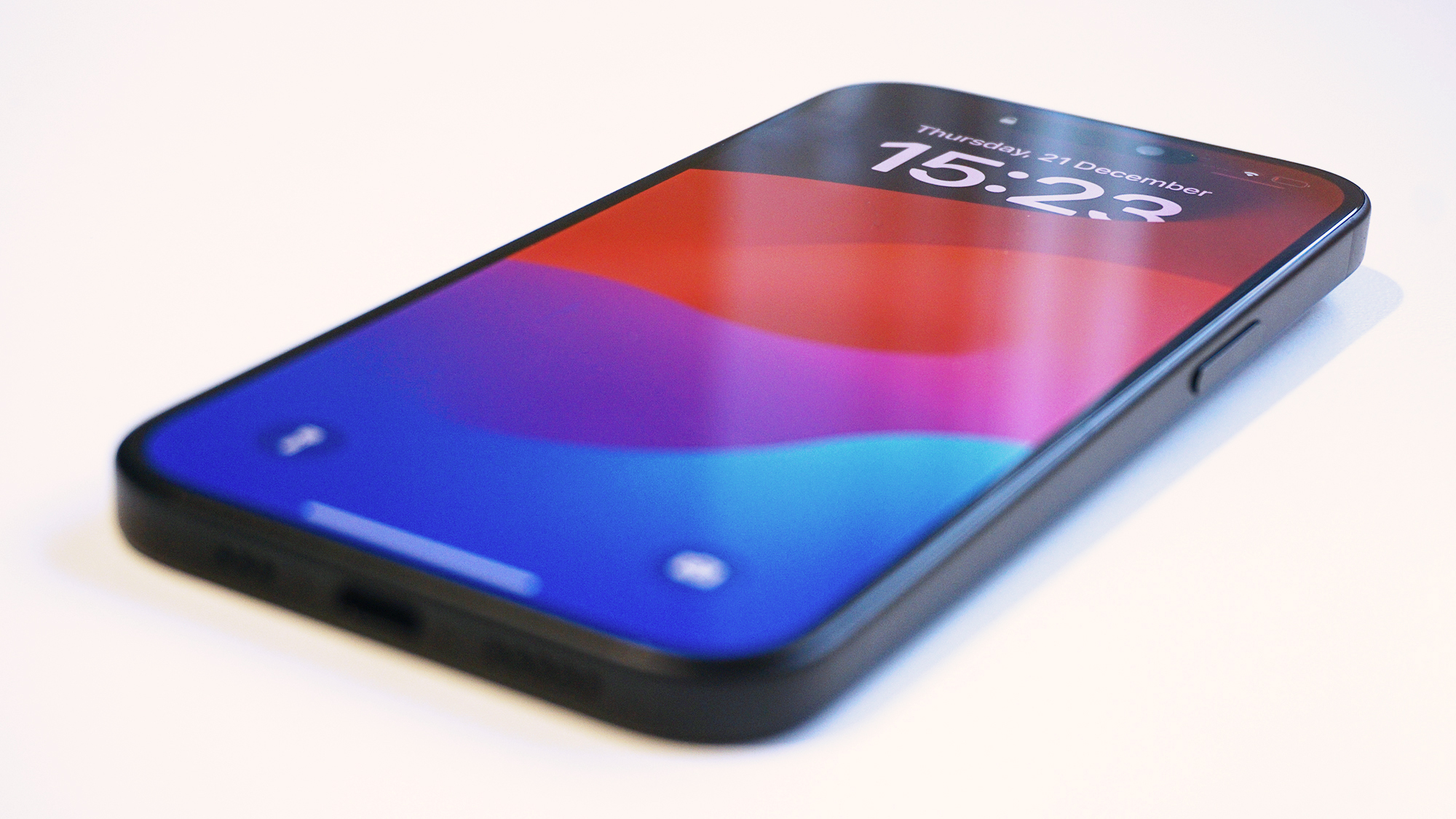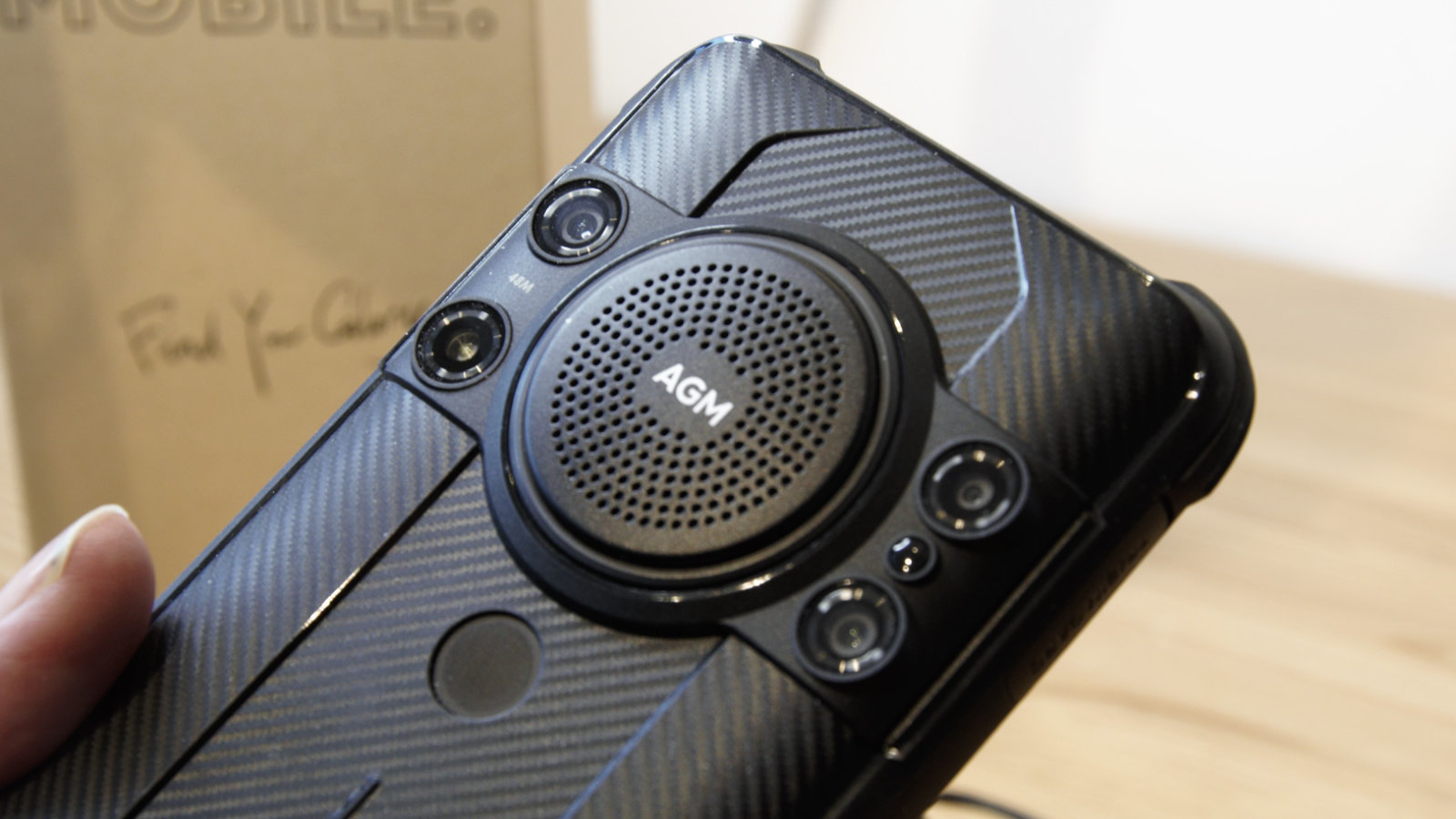This wild new phone has its own subwoofer, and it's got me wondering why phone speakers are still an afterthought

Xiaomi sub-brand Redmi has revealed the K90 Pro Max, a new mid-range smartphone with a built-in subwoofer and some ridiculously powerful internal hardware.
The Redmi K90 Pro Max comes with a 6.9-inch OLED display, a Snapdragon 8 Elite Gen 5 chipset, a triple-camera system with three 50MP sensors and a 5x periscope lens, an enormous 7,560mAh battery with 100W (100W!) wired charging and 50W wired charging, and, as mentioned, a 2.1 speaker system with two linear stereo speakers, a rear-firing subwoofer, and sound tuning by Bose. It also comes in a blue denim design option.

As TechRadar’s Staff Writer for Mobile Computing and one of the team’s many resident music nerds, that latter feature has certainly caught my attention. This is the first phone I’ve ever seen with a subwoofer – while other devices have made attempts at audio-focused hardware, I’ve never seen a separate speaker for bass before.
Though we haven’t tested the K90 Pro Max, this standalone subwoofer should, in theory, allow for punchier, fuller bass, while taking pressure off the main speakers and allowing more detail to come through. The K90 Pro Max won’t launch in the US, but I’d be curious to try it for myself should it come to Europe under the Poco brand (as Android Authority speculates).
In fact, the apparent strangeness of a phone with a subwoofer – or any kind of additional speaker for that matter – has me wondering why there are so few smartphones with any kind of specialised audio hardware.
Phone speakers are essential

You probably use your phone’s speakers every day. Whether you’re watching videos, listening to voice messages, playing games, or streaming music, chances are that some kind of audio makes its way from your phone to your ears on a daily basis. I’m streaming Spotify through my phone as I write this.
However, it’s really very rare that you see a phone maker make any kind of noise (get it?) about its phone’s audio capabilities. During your average phone release keynote, you might get a cursory mention of an upgrade to a new version of Bluetooth or support for higher-quality streaming, but never the speakers themselves.
Sign up for breaking news, reviews, opinion, top tech deals, and more.
It’s odd, really. Phone makers are keen to shout about their displays, touting even minor upgrades as reasons to purchase an entirely new handset, but won’t do the same for the audio experience, often the opposite side of the same coin.
I’m not saying there aren’t reasons for this; phone speakers have to be pretty small in order to fit inside a compact frame, which, thanks to those pesky laws of physic,s puts a pretty low ceiling on detail, clarity, and bass response.
Even though I was previously impressed with Apple’s efforts on the iPhone 15's speaker system, it can still struggle to keep up with dedicated speakers thanks to its tiny drivers. Some phone makers may keep quiet about their phone speakers in recognition of the fact that they’ll never quite match dedicated speakers.
And then there’s the marketing side – how do you advertise better sound quality? It’s pretty easy to show off a nice new display on a billboard or TV spot, but audio quality is a much more abstract thing, and much harder to signify.
Still, I think it’s high time that phone makers started paying a little more attention to audio quality – a feature most of us use every day deserves to be more than an afterthought.
Giving 'speakerphone' a whole new meaning

Though it might seem hard to believe, the Redmi K90 Pro Max isn’t the first speaker-focused phone to catch TechRadar’s attention.
Back in 2022, we published our AGM H5 Pro review, a rugged phone with a ridiculous 109db speaker mounted on the rear panel. For reference, that’s more than twice as loud as a motorcycle engine, and our review mostly found it to be an annoyance.
Then, in 2024, we covered the ZTE Nubia Music, a cheap phone with two headphone jacks and another huge speaker on the back – but as reviews came in, it became clear that the quality of this massive vinyl-inspired speaker wasn’t all that great.
I’m hoping the Redmi K90 Pro Max, should it land on Western shelves, can serve as something of an ambassador for speaker phones by being, well, actually good. The Bose branding on the back does give me some hope – Bose being the brand behind many of the best sound bars and the best headphones – but we’ll have to wait and see (wait and hear?) for ourselves.
In any case, the K90 Pro Max could land at a very reasonable price. In its home market of China, the phone starts at CNY 3,999, which works out to about $560 / £420 / AU$860 – pretty impressive for a phone with such powerful hardware. Let us know what you think of this bass-boosted handset in the comments below – we’re all ears.
Follow TechRadar on Google News and add us as a preferred source to get our expert news, reviews, and opinion in your feeds. Make sure to click the Follow button!
And of course you can also follow TechRadar on TikTok for news, reviews, unboxings in video form, and get regular updates from us on WhatsApp too.

Jamie is a Mobile Computing Staff Writer for TechRadar, responsible for covering phones and tablets. A lifelong tech-obsessive, Jamie began his writing career as a music blogger before studying journalism at Goldsmiths College, and joined TechRadar in 2024. He thinks the iPhone 5S is the greatest phone of all time, but is currently an Android user.
As well as reporting on the latest in mobile hardware, software, and industry developments, Jamie specialises in features and long-form pieces that dive into the latest phone and tablet trends. He can also be found writing for the site's Audio and Streaming sections from time to time, or behind the decks as a DJ at local venues around London.
You must confirm your public display name before commenting
Please logout and then login again, you will then be prompted to enter your display name.